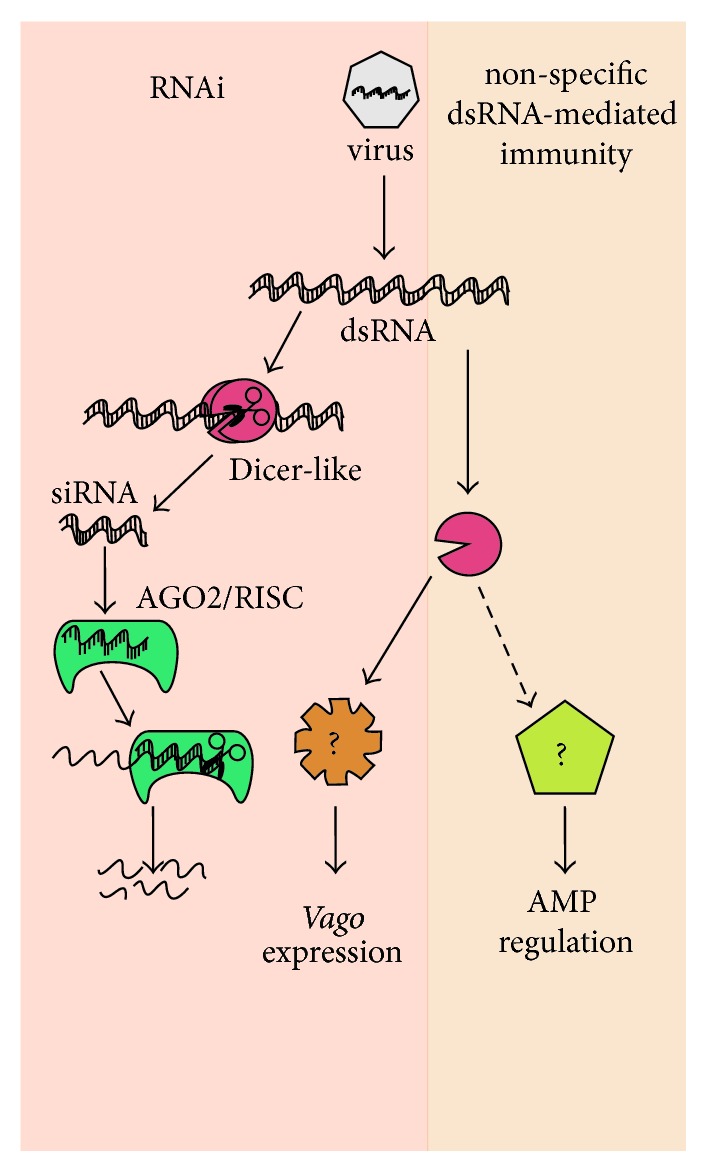Figure 1.

RNAi and non-sequence-specific dsRNA mediated antiviral defense in honey bees. The short-interfering RNA (siRNA) pathway of RNA interference (RNAi) is important for honey bee antiviral defense and experimental gene knockdown. Although not yet fully characterized, the honey bee RNAi-pathway is likely induced by Am Dicer-like cleavage of viral dsRNA into 21-22 bp siRNAs. Following cleavage, siRNA is bound by AGO2 (Argonaute-2), the catalytic subunit of the multiprotein RISC (RNA-induced silencing complex). The passenger strand is then released and the guide strand aids RISC in targeting and cleaving complementary viral genome sequences. In Drosophila melanogaster, Dicer-2 also acts as a dsRNA sensor which, when bound to dsRNA, initiates a signal transduction cascade that results in increased expression of Dm Vago and, in turn, increased expression of Jak-STAT pathway-associated genes. In honey bees, nonspecific dsRNA-mediated reduction in virus abundance [38] may involve Am Dicer-like and Am vago, but the mechanism(s) of this response have not been fully characterized. This figure is adapted from [10].
